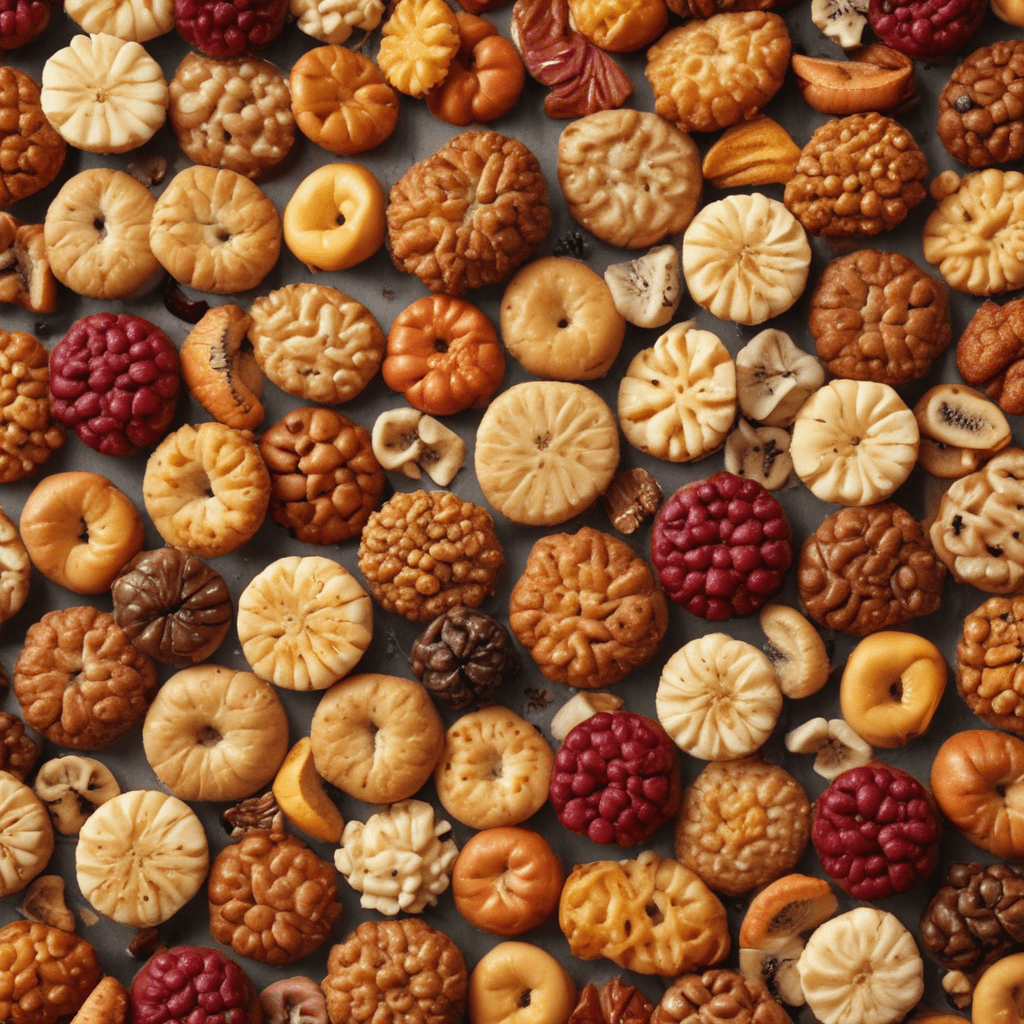
1. Introduction: The Rise of Healthy Snacking
In today's fast-paced world, snacking has become an integral part of our daily routines. As we juggle busy schedules and demanding lifestyles, snacks provide us with the energy boost and nutrient replenishment we need to power through our days. However, the modern snacking landscape has undergone a significant transformation, with a growing emphasis on health and wellness. Consumers are increasingly seeking out nutritious and wholesome options that not only satisfy their cravings but also nourish their bodies. This shift towards healthy snacking reflects a growing awareness of the impact of diet on overall health and well-being. ## 2. Understanding the Importance of Healthy Snacks
Healthy snacks play a crucial role in maintaining a balanced diet and supporting overall health. They provide essential nutrients, including vitamins, minerals, fiber, and protein, which are vital for optimal body function. Regular snacking helps regulate blood sugar levels, preventing energy crashes and cravings. Additionally, healthy snacks can boost metabolism, increase satiety, and promote weight management. Furthermore, choosing nutrient-rich snacks can enhance cognitive function, improve mood, and reduce the risk of chronic diseases such as heart disease, diabetes, and certain types of cancer. Overall, incorporating healthy snacks into your diet is a simple yet effective way to nourish your body, enhance your well-being, and support a healthy lifestyle.
3. Exploring Popular Healthy Snack Trends
The healthy snacking movement has given rise to a diverse array of innovative and delicious options. Let's delve into some of the most popular trends that are shaping the future of snacking: ## 3.1. Plant-Based Snacks:
Plant-based snacks are gaining immense popularity as consumers embrace a more sustainable and environmentally conscious lifestyle. Fruits, vegetables, nuts, seeds, and legumes are packed with essential nutrients and fiber, making them ideal choices for healthy snacking. The increasing availability of plant-based alternatives to traditional snacks, such as dairy-free yogurt and plant-based protein bars, has further fueled the growth of this trend.
6. The Future of Healthy Snacking
The future of healthy snacking is bright, with innovation and technology driving the development of even more personalized and convenient options. Smart snacks, featuring ingredients that enhance cognitive function and mental clarity, are expected to gain traction. Personalized nutrition plans and subscription boxes tailored to individual dietary needs and preferences will also play a significant role. Additionally, advancements in food technology will lead to the creation of novel snacks with enhanced nutritional profiles and improved taste and texture. The integration of AI and machine learning into snack development will personalize snacking experiences and offer recommendations based on individual preferences and health goals.
7. Overcoming Challenges to Healthy Snacking
Despite the growing demand for healthy snacks, several challenges remain. Accessibility and affordability can be obstacles for some individuals, particularly those in underserved communities. Additionally, navigating the abundance of options and making informed choices about healthy snacks can be overwhelming for consumers. Education and awareness campaigns are crucial to dispelling myths, providing accurate information, and empowering consumers to make healthy snacking decisions. Collaboration between food manufacturers, retailers, healthcare professionals, and policymakers is essential to address these challenges and create a supportive environment for healthy snacking.
8. Healthy Snacking for Specific Needs and Diets
Individuals with specific dietary needs and restrictions, such as food allergies, intolerances, or chronic conditions, require careful attention when choosing healthy snacks. Consulting with a registered dietitian or healthcare professional can provide personalized guidance and ensure that snacks align with individual requirements. For example, individuals with diabetes should focus on low-glycemic snacks, while those with gluten intolerance need to choose gluten-free options. By understanding specific dietary needs and making informed choices, individuals with special considerations can enjoy healthy snacking without compromising their health.
9. Resources for Healthy Snacking Inspiration
Numerous resources are available to inspire and support your healthy snacking journey. Nutrition websites, blogs, and social media platforms offer a wealth of information and recipes. Cooking classes and workshops provide hands-on experience and practical skills for preparing nutritious snacks. Additionally, mobile applications and online tools can help track calorie intake, monitor nutritional content, and find healthy snack options on the go. By leveraging these resources, individuals can discover delicious and fulfilling snacking options that align with their health goals and preferences.
10. Conclusion: Embrace the Power of Healthy Snacking
Healthy snacking is an essential aspect of a balanced lifestyle, offering numerous benefits for physical and mental well-being. By incorporating healthy snacks into your daily routine, you can fuel your body, enhance your cognitive function, and promote overall health. Explore the diverse range of healthy snack options, address challenges through education and support, and choose snacks that align with your specific needs. Remember, healthy snacking is a journey, not a destination. Embrace the power of healthy choices and make informed decisions that nourish your body and empower you to live your best life.
FAQ:
What are some examples of healthy snacks?
- Fruits and vegetables: Apples, bananas, berries, carrots, celery, cucumbers.
- Nuts and seeds: Almonds, cashews, chia seeds, pumpkin seeds.
- Whole grains: Whole-wheat bread, brown rice, quinoa.
- Dairy products: Yogurt, cheese, milk (if tolerated).
- Protein sources: Hard-boiled eggs, lean chicken or fish.
How often should I snack?
- The frequency of snacking depends on individual factors such as activity level, metabolism, and dietary needs. Generally, snacking 2-3 times per day between meals is recommended.
What are some tips for making healthy snacking choices?
- Read food labels carefully and choose snacks with low sugar, sodium, and unhealthy fats.
- Focus on whole, unprocessed foods whenever possible.
- Consider portion sizes and avoid overeating.
- Plan ahead and have healthy snacks readily available to avoid unhealthy choices when hungry.


